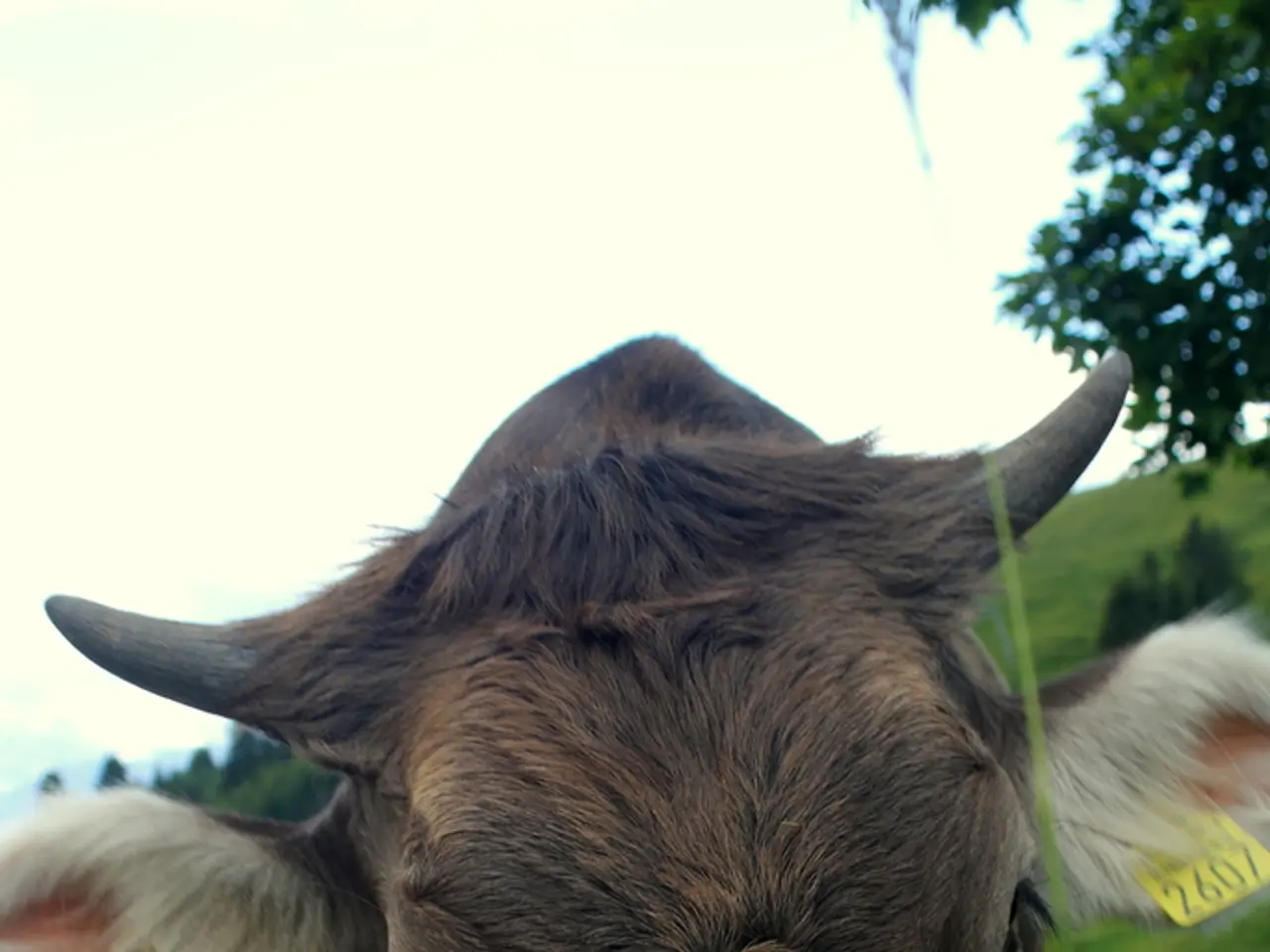U.S. Cattle Test Positive for Bird Flu Virus
The U.S. Department of Agriculture's Animal and Plant Health Inspection Service (APHIS) has issued a statement highlighting the widespread prevalence of the D1.1 genotype of H5N1 bird flu in North American flyways during the recent fall and winter seasons. This strain, primarily detected in dairy cows in Nevada and Arizona, has caused concern due to its potential to spread to mammals, including dairy cattle, and its association with more severe human infections compared to previous genotypes.
Current containment measures include bans on poultry and dairy cattle exhibitions at fairs and shows, the deployment of veterinary outbreak response teams, active surveillance and genetic sequencing by USDA and state agencies, the implementation of biosecurity practices on farms, and research funded by USDA to understand virus behavior and improve control strategies. As of now, 36 states are enrolled in the testing program, covering a significant portion of the nation's commercial milk supply.
The D1.1 genotype has been linked to severe human infections, including fatal cases. A fatal case in Louisiana (Dec 2024) was linked to backyard bird exposure, while a severe case in California (Apr 2025) was associated with exposure to infected dairy cows. The virus has demonstrated the ability to infect multiple species—wild birds, domestic poultry, dairy cattle, mammals—which may increase spillover risk to humans and complicate control efforts. Viral RNA has been found in raw milk from infected cows, raising concerns over potential foodborne exposure.
Michael Osterholm, an epidemiologist at the University of Minnesota, has highlighted the heightened risk of spillover events due to increased activity among waterfowl across the U.S. He stresses the importance of vigilance and proactive measures in combating the persistent threat posed by the bird flu virus.
The H5N1 subtype of bird flu has been circulating within U.S. dairy cow populations since 2024. The D1.1 genotype has been found in various wildlife species and domestic poultry. The USDA is collaborating with the Nevada Department of Agriculture to conduct thorough assessments on the affected farm. As of now, close to 960 herds across the country have been impacted by the H5N1 bird flu.
Pasteurization is a protective measure against the bird flu virus, as per the USDA's National Milk Testing Strategy (NMTS). The D1.1 genotype has been confirmed in dairy cattle in Nevada, marking the first detection of its presence in this livestock population. The need for heightened surveillance and swift action remains paramount in safeguarding both animal and human populations from the potentially devastating consequences of avian influenza.
- Michael Osterholm, an epidemiologist, emphasizes the importance of vigilance and proactive measures, as he believes increasing waterfowl activity widens the risk of spillover events due to the persistent bird flu threat, especially with the circulating H5N1 subtype in U.S. dairy cow populations since 2024.
- Under the USDA's National Milk Testing Strategy (NMTS), pasteurization is a protective measure against the bird flu virus, given the confirmation of the D1.1 genotype in dairy cattle in Nevada, making it the first detection of its presence in this livestock population.
- In the context of health-and-wellness, environmental-science, and the primary focus on culture, science, medical-conditions, and health, the D1.1 genotype of H5N1 bird flu has caused concern due to its potential to spread among mammals and humans. Infected mammals, such as dairy cattle, have demonstrated the ability to transmit the virus, particularly through raw milk, emphasizing the need for heightened surveillance, control strategies, and biosecurity practices.




